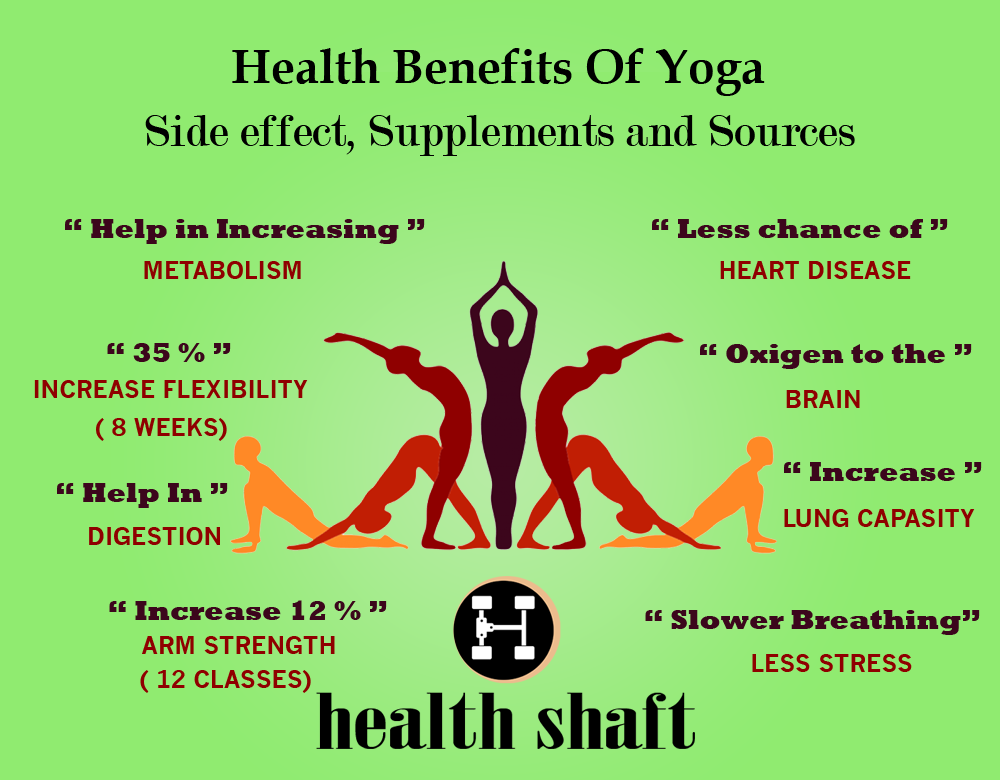Table of Contents
Meaning of YOGA
Yoga is an effort to achieve perfection by building your talent at the physical, important, mental, intellectual, and spiritual levels. And the most important step you can take in expanding your knowledge is to take control of your mind.
Many forms of yoga have a profound effect on body language, as well as the practice of breathing and meditation, all based on the philosophy of knowledge and the natural way of life.
At the level of effective yoga is the integration of body, mind, and spirit to express our superior strength in life by performing asana, pranayama, and meditation.
The Health Benefits of Practicing Yoga
The health benefits of yoga are almost endless!
Practicing yoga helps to develop healthy habits and values, such as discipline, honesty, dedication, self-examination, reasoning, and communication.
health benefits include:
- Keep your mind healthy and strong
- Reduce stress and encourage relaxation
- Get a good night’s sleep
- Improve your immune system
- Help cure common pain such as back pain
- Increase happiness and well-being and reduce stress
- Lose weight and change your body shape
- Improve and maintain the health of muscles, joints, and organs
- Prevent conditions such as diabetes, heart disease, and immune disorders
- Improve flexibility, strength, power, mobility, range of motion, and balance
Types of yoga
Vinyasa yoga
These yoga usually contain a powerful sequence of flowing yoga poses that will include – depending on the level – advanced posture, such as arm balances, headstands, shoulders.
Many vinyasa classes have music compatibility and teacher preferences.
Hatha yoga
Many of the yoga styles taught in America today are a form of hatha yoga, a common term that refers to the visible part of yoga, rather than the philosophy of yoga .
Hatha yoga may be a combination of poses and breathing exercises. Ask the school or teacher to find out more about the level of classes described as Hatha yoga only.
Kundalini yoga
Kundalini yoga is a form of yoga that involves singing, singing, exercise, and breathing. Its purpose is to activate your power.
This is the so-called spiritual force that is at the bottom of your spine.
Ashtanga yoga
This is a challenging style of yoga that focuses on a continuous series of yoga sequences that students practice on their own under the guidance.
If you think yoga is not a gym, you have not tried the Ashtanga class.
Classes include advanced placement such as arm measurements and modifications that include headstands and shoulder areas. Emerging students are strongly advised to study with an experienced person.
Ashtanga classes will incorporate teachings into the philosophy of yoga.
Bikram yoga
Bikram yoga is a series of 26 poses made in a room heated to 105 degrees, which allow for stretching and provide better heart exercise.
Unlike most yoga classes, Bikram classes are usually held in a room with mirrors. Hot yoga refers to any yoga class performed in a warm room – usually from 80 to 100 degrees.
Yin yoga
Yin yoga aims to stretch the connective tissue around the pelvis, sacrum, spine, and knees to promote flexibility.
Positions held for longer periods in yoga classes, usually from three to five minutes. It’s a quiet style of yoga, and it will show you how good you are at staying still.
Restorative yoga
If you want a little rest from your yoga class, restorative yoga is yours. This style of yoga often involves little or no form of relaxation.
Conditions include easy twisting, folding, and backbends, which are often done with the help of many resources, including blankets, blocks, and bolsters.
Prenatal yoga
Yoga can be a great exercise for future mothers. It usually focuses on reducing the pain associated with pregnancy, such as painful buttocks or back pain.
Prenatal yoga provides relief from stress, exercise, and self-care at the same time, and breathing exercises can help during childbirth and delivery.
As this is a practice for expectant mothers, it does not include conditions that are unsafe in a changing body. (But be sure to check with your doctor before starting a yoga practice, if you are pregnant.) Pregnancy Yoga, like many exercises to prepare your body for delivery, such as squats and activities. -pelvic floor.
Benefits of yoga for men
- Extends the range of motion
Men have certain muscles which are the main focus of exercise in the gym, such as muscles, glutes.
But, these muscles can only be trained to a certain extent.
When they focus on specific exercises such as lifting weights or bench presses, repetitive and lonely movements only affect certain muscle groups.
And over time, this will prevent the muscles ’movement and growth.
- Improves breathing
Breathing is an unconscious act that takes place day and night, providing much-needed oxygen to our bodies.
our bodies are designed to breathe through our nostrils and we need to breathe.
Experts say that most people breathe 10-20 percent of their full potential. This poor breathing pattern can contribute to many health problems, from high blood pressure to awareness.
When exposed to yoga, a person will become accustomed to breathing in and out of the nostrils, taking full, deep breaths, which stimulate the lower lung to distribute more oxygen throughout the body.
That respiratory system, known as nasal breathing, is able to improve performance as it increases strength and vitality.
- It helps to relax
There should be certain days when you should take a break from exercise but you need to stay active.
It also helps your muscles to recover, preparing you for the next exercise.
- It improves sexual health
Men who practice yoga are more aware of their bodies and have lower levels of anxiety.
Yoga also helps to increase blood flow to the genital area.
According to Ekhart Yoga, the practice also helps drop toxins from the body that affect sexual function.
Health Benefits of yoga for woman
- Helps during pregnancy and labour
Studies have proven that prenatal yoga can be helpful in both pregnancy and childbirth. not only with stress management and reducing pelvic pain, but it can also improve birth outcomes such as reducing delivery time.
- Improves your sexual health
Yoga can mean great fun even in the bedroom! The study in India focused on 40 healthy and active women.
In fact, they have shown improvement in all six areas of sexual function, including desire, tenderness, and orgasm.
- Reduce symptoms of Premenstrual syndrome
focuses on the emotional, behavioral, and physical symptoms associated with premenstrual syndrome.
Improvements have been seen in all three areas, with studies concluding that yoga is a treatment for those with PMS.
- Help in diabetes
The number of women suffering from gestational diabetes is growing worldwide.
A study conducted on this condition in 2015 looked at how mild exercise can help both mother and baby.
It shows that low physical exercise, such as yoga, can have many health benefits in birth.
Yoga for beginners
Whether you are a morning man or not, yoga practice can make your day a success.
You will start your day with a positive feeling and with a new energy that will enable you to face any challenges during the day. It doesn’t take long and you can do it almost anywhere, even if you’re starting out.
Some poses/postures for yoga beginners
Pose 1: Downward-Facing Dog / Adho Mukha Svanasana
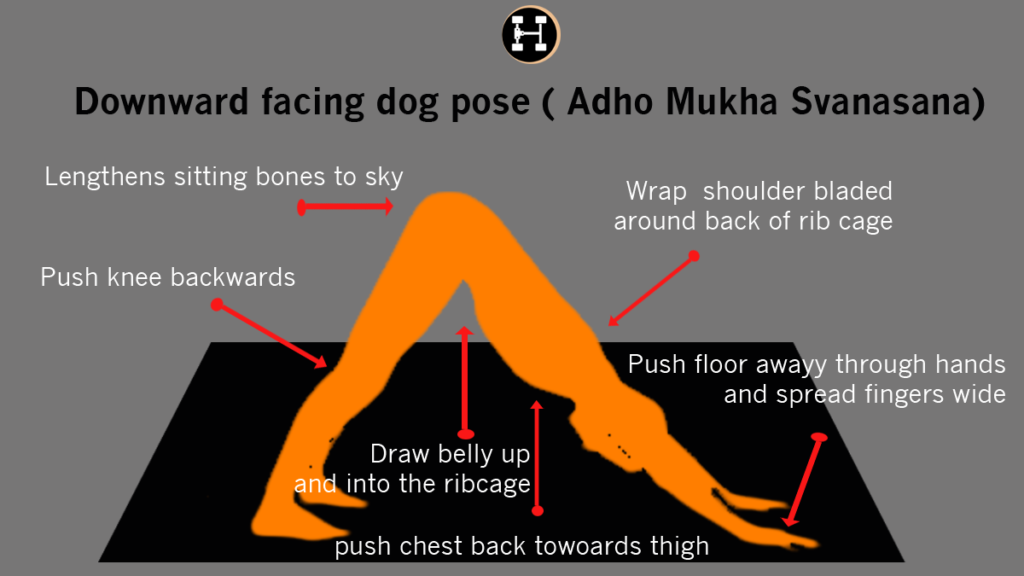
Steps:
- Start at your hands and knees, with your hands under your shoulders and knees below your hips.
- Spread your hands wide and press your index finger and thumb on your mat.
- Raise your tail and press your limbs up and down, drawing your hips to the ceiling. Adjust your legs as much as possible and press your heels down.
- Your head should be between your arms, your knees, and your backs should be flat.
- Hold 5-10 breaths.
Pose 2: Mountain Pose / Tadasana
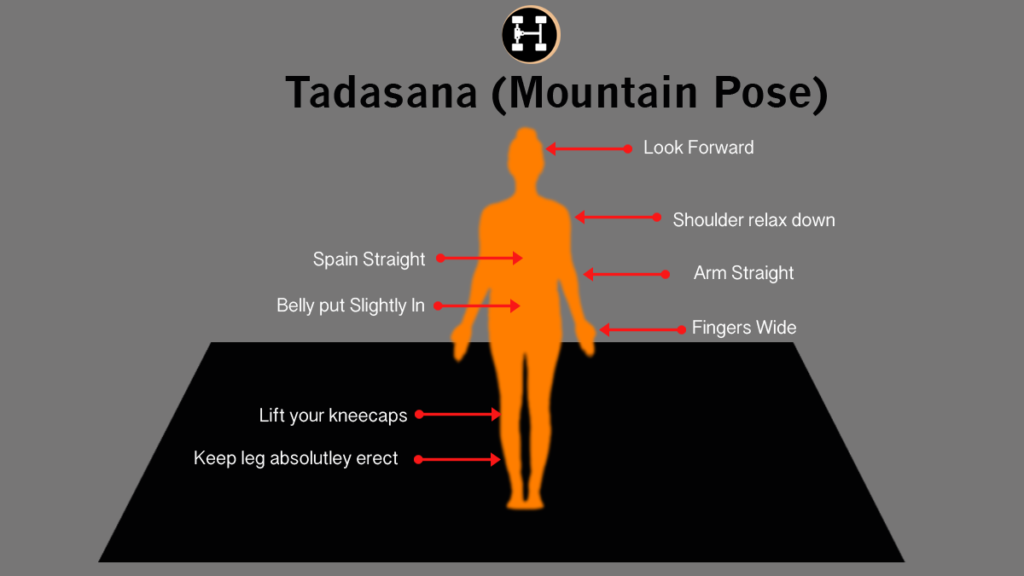
Steps:
- Stand with your toes together and heels a little apart.
- Spread your toes and place your weight equal on both feet.
- Loosen your shoulders and bend them back and forth.
- Insert and reach for your arms above, while pressing down on your feet.
- You can also place your hands in a prayer area in front of your chest, or relax your sides – all in a variety of used forms.
- Take a deep, slow, deep breath into and out of your nose.
- Hold 3-5 breaths.
Pose 3: Crescent Lunge / Utthita Ashwa Sanchalanasana
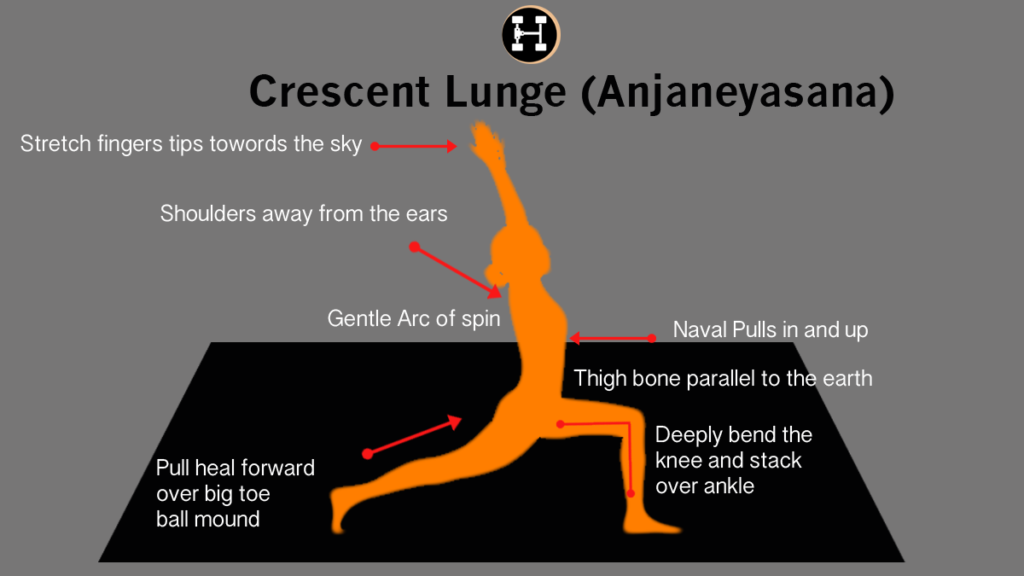
Steps:
- Take a big step forward with your left foot starting at a standing position, your feet almost separated in length.
- Bend your front knee and keep your hind leg straight and the heel raised to the ground.
- Try bending your front leg so that your thigh is flat on the floor.
- Stretch your arms towards the ceiling on either side of your head and stretch as you press on the mat to feel the extension of your waist.
- Hold till 30 seconds and repeat from other side.
- To move to Low Lunge / Anjaneyasana, place your knee back in the hole, keeping the leg extended for a long time and the patch tight.
Pose 4: Warrior II/Virabhadrasana II
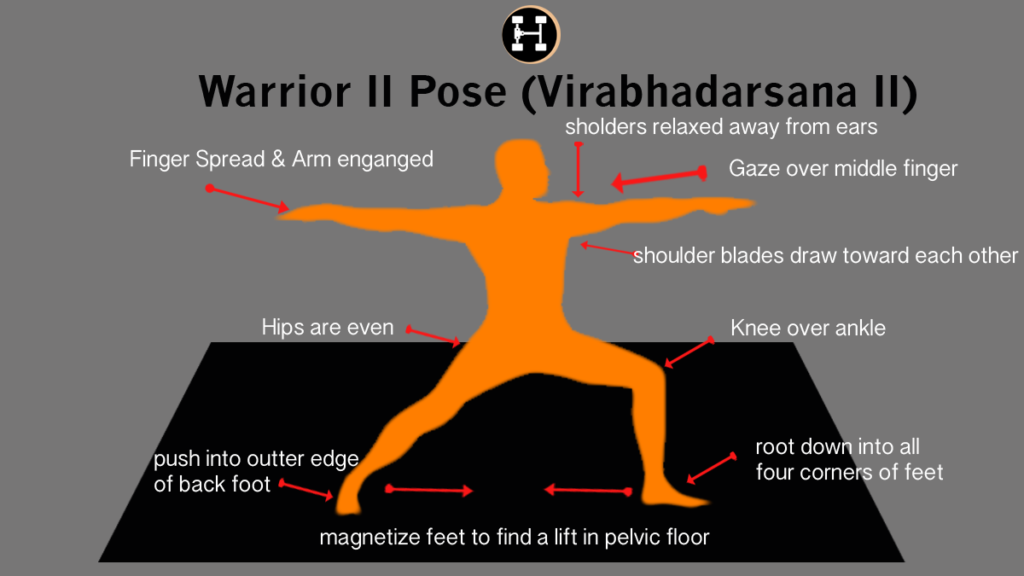
Steps:
- Take a big step forward with your left foot starting at a standing position, your feet almost separated in length.
- Stretch your arms to fit the floor.
- Bend your left knee closer to the 90-degree angle, with your thigh parallel to the floor, while keeping your right leg straight.
- Point your left toes forward and then turn your right foot to the right to align with your left foot.
- Your left heel should match the arch of your right foot.
- At the same time, turn your torso to the right so that your left buttocks are facing the front of the room and your right hip is facing backwards.
- Your left arm and head should both be pointing forward and your right should be pointing backwards.
- Hold 1-5 breaths.
Pose 5: Triangle/Trikonasana
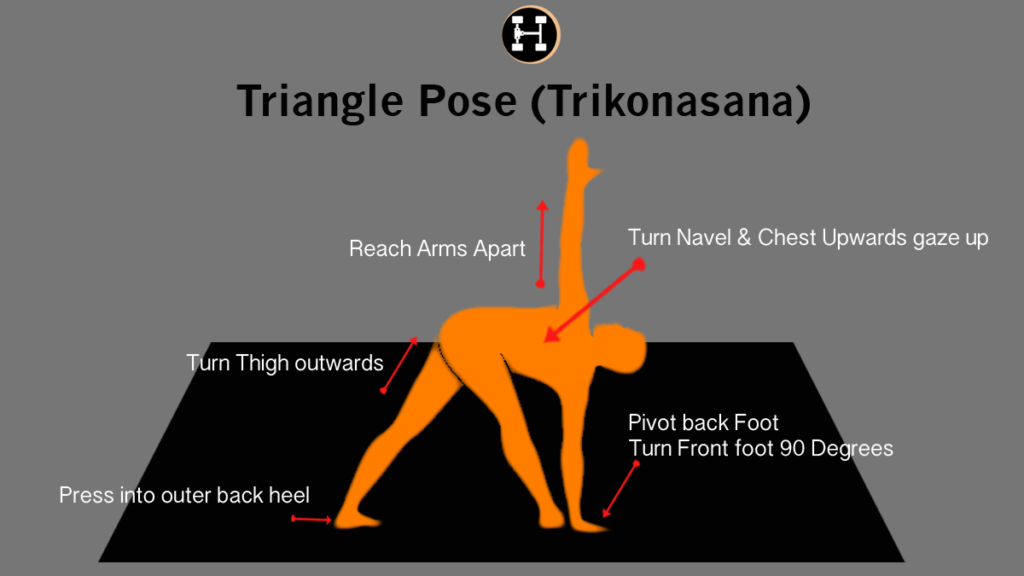
Steps:
- Start in Warrior II.
- Align your front leg.
- After that, reach forward with your left hand down.
- Rotate your arms around him at 6 and 12 p.m.
- Place your left hand on your shin, or down if you can, and extend your upper fingers up to the ceiling.
- Hold 10 breaths, on switch sides.
Pose 6: Plank Pose / Kumbhakasana
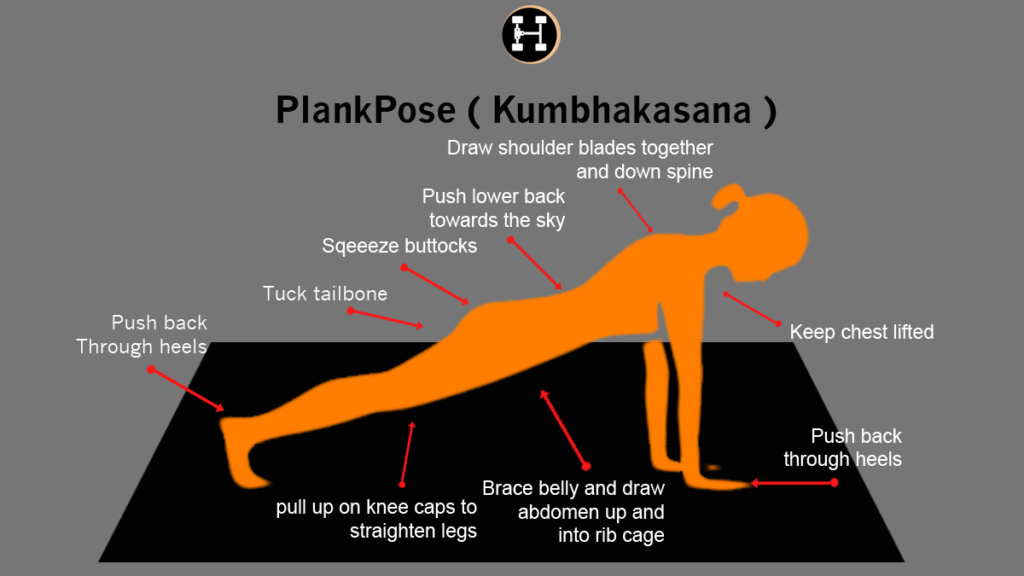
Steps:
- Start at all fours, with your knees below your hips and your hands low right down to your shoulders.
- Raise your knees down and stretch your legs behind you.
- Now you have to be on your toes and hands, and your body has one long line.
- Keep the palms of your hands facing down, the hands separated by shoulder width, the shoulders joined above your wrists, and the inside involved.
- Hold position for 5 breaths.
Pose 7: Low Plank/Chaturanga Dandasana
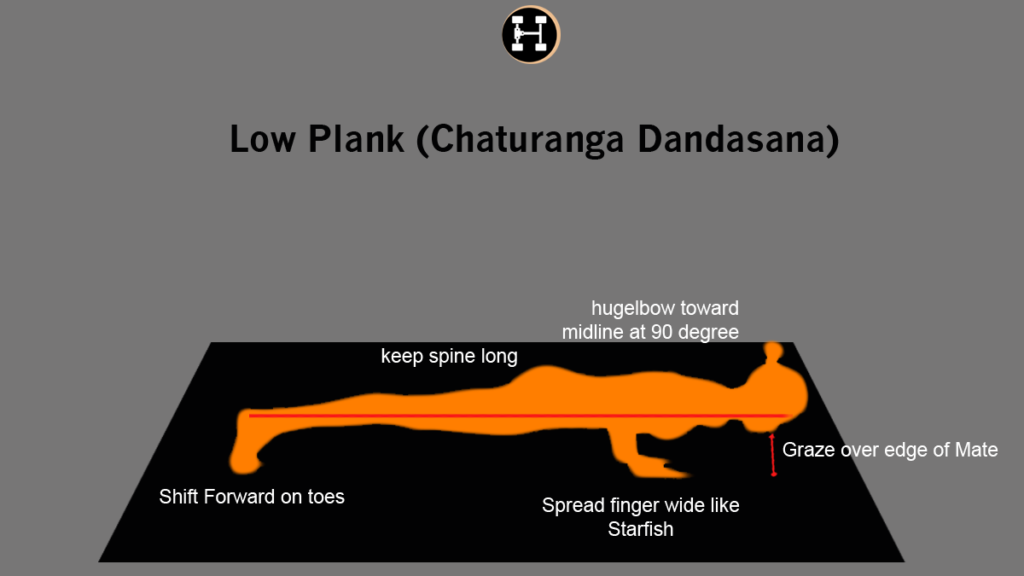
Steps:
- Start at the Plank Pose with the palms of your hands up and down, hands separated by shoulder width, shoulders folded above your wrists, extended legs, and joint joint.
- lower yourself to the lower Plank by bending your elbows, keeping them close to the side of your body, until they form 90 degree angles.
- Hold one breath.
Pose 9: Dancers Pose/Natarajasana
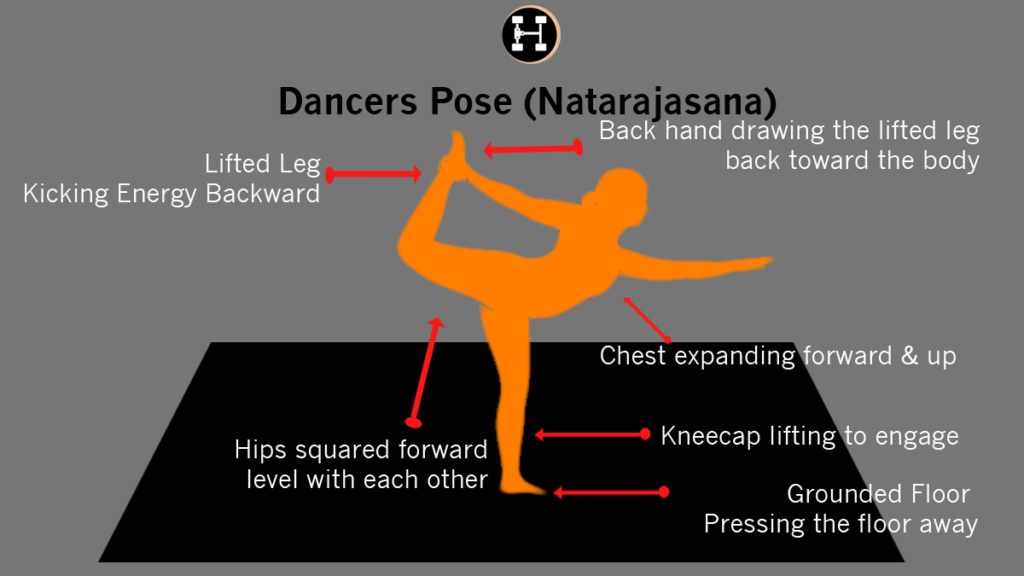
Steps:
- Stand tall with your feet together.
- Bend your left knee and bring your left foot towards your objects.
- Hold the inner arch of your left foot with your left hand and lift your foot to the ceiling.
- At the same time, extend your right arm forward and upward toward the ceiling.
- Press down with your entire right foot as you begin to open your chest and pull on your raised leg.
- Keep your chest up.
- Hold on to one side for 5-10 breaths, then switch sides.
Some Tips for a Safe Yoga Practice
Yoga offers a perfect body and a sense of exercise, along with health benefits you will not find anywhere else.
Yoga has become more popular, injuries related to Yoga have also become more common.
With the right attitude, you can keep your Yoga practice safe and harmless.
- Avoid seeing Yoga as a competition – even yourself
- Listen to your body and be on time
- Challenge yourself, don’t bother
- Forget what you did
- Get out of the area where you need to be
Conclusion
According to Swami Vivekananda Yoga is a way to suppress human evolution, in one life, or in a few months or even a few hours of human life.
Thus, yoga is a common spiritual science of self-improvement and self-awareness that shows us how to build our full potential in our multicultural lives. It was started by the rishis and sages of ancient India and preserved by a stream of living teachers from then on, who have been adapting this science to all generations.
Practicing yoga helps to provide many health benefits along with the foundation and tools for developing good habits, such as exercise, questioning, and non-sticking. This exercise is also a way to give you the strength to make the decisions you want to have to live a healthier and more fulfilling life.

